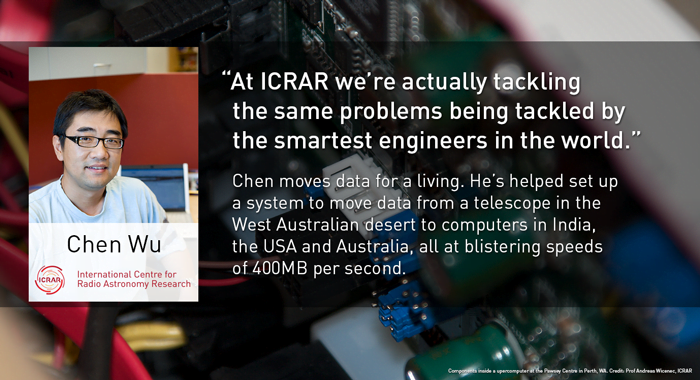From there the data is sent to MIT in the United States and archived at iVEC (Perth), both in a permanent storage facility and a temporary online storage. The stored data must also be organised in a way that is easy for astronomers to search, retrieve and reprocess.
Associate Professor Wu grew up in China and worked as a software engineer and a researcher at the Chinese Academy of Sciences before moving to Perth to do a PhD in data retrieval and storage and postdoctoral research in pattern recognition. He said he enjoyed the balance at ICRAR between academic research and contributing to real projects. “It’s no longer just writing a paper, it’s about getting real, exciting things done that can serve the scientific community,” Associate Professor Wu said. “It’s a kind of hybrid between academia and industry.”
iVEC and the Pawsey Centre
The Pawsey centre (operated by iVEC) is a collection of supercomputers, some of which are used by Chen and the ICRAR data intensive astronomy team for astronomy with the Murchison Widefield Arrray. More information on the Pawsey Centre and iVEC is available at http://ivec.org.
Associate Professor Chen Wu’s work on data transfer, storage and retrieval for the Murchison Widefield Array (MWA) telescope puts him at the top of his profession globally. “The problem we’re currently dealing with is also being dealt with by engineers working at Google, Facebook and all these IT companies,” he said. “If they’re saying they’re hiring the smartest software engineers then we’re actually tackling the same problems being tackled by the smartest engineers in the world. So it’s very interesting and exciting work we’re doing here.”
